
Ted Huck
Director of Sales
|
Topic:
AC Mitigation – Macro trends driving a surge in AC Mitigation in the US and how that might impact India
Affiliation:
Director of Sales MATCOR Inc a BrandSafway company
Abstract:
The United States electrical energy demand is surging after decades of relatively weak growth. Massive investments in data centers, the increased number of renewable energy generation sites, the reshoring of significant manufacturing and mining operations and the investments needed to upgrade the existing stressed electrical distribution systems are having an immediate impact on the pipeline industry. New pipelines are required to provide natural gas to the 250+ power plant projects that are planned. New AC transmission networks are being built to support these new facilities and the renewable facilities that are being added to the electrical grid. Existing transmission systems are being reconductored to significantly increase their transmission capacity. All of this in an environment where landowners and regulators are looking to collocate utilities in common corridors to minimize their footprint. This has a direct impact on pipeline integrity as AC induced interference risks continue to gain importance as a result of these collocations. This presentation will discuss the AMPP Standard for AC Mitigation and discuss the strategies and engineering controls available to comply with the standard and mitigate risk.
Biography :
Ted Huck, Director of Sales, MATCOR Inc.
Mr. Huck has been with MATCOR for over 24 years and has been involved in technical sales for 35+ years helping to provide value added solutions to client problems in a variety of industries and applications. He has published numerous technical articles and is a frequent presenter on a variety of corrosion, cathodic protection, integrity management, and AC Mitigation topics to numerous AMPP and industry specific conferences both within the United States and around the globe. His YouTube video “Introduction to Cathodic Protection” has over 300k views. He has a BS in Electrical Engineering from Kettering University, Flint Michigan and an MBA from Texas Christian University, Ft. Worth Texas.
|
|
|

Christopher Do
Founder & Chairman
|
Topic:
Advanced Solutions for Corrosion Under Insulation (Cui) Management: Integrating Monitoring, Inspection and Prevention
Affiliation:
Founder & Chairman,
IEV Group & Technisur Engineering Pvt Ltd
Abstract:
Corrosion under insulation (CUI) remains a persistent and costly integrity threat across refining, petrochemical, power and midstream assets, driving unplanned shutdowns, safety incidents, and high lifecycle cost. This paper presents a proactive, integrated CUI management framework that combines (i) continuous, non�intrusive monitoring of moisture ingress and corrosion conditions beneath insulation, (ii) targeted in�service inspection using advanced NDE (guided waves, automated digital radiography, and pulsed eddy current/array), and (iii) long�term prevention via multilayer barrier–galvanic wraps and microcrystalline wax�tape sealing at cladding overlaps and joints. Field experience shows this Monitor–Inspect–Prevent approach improves detection accuracy, reduces unnecessary insulation removal, and extends asset life by shifting from periodic, reactive work to predictive integrity management.
Keywords: corrosion under insulation; predictive maintenance; guided wave UT; automated radiography; pulsed eddy current; asset integrity management.
Biography :
Christopher Nghia Do is a seasoned industry leader with over 38 years of experience, including more than 3 decades dedicated to asset integrity management (AIM) for oil and gas facilities. As the Founder and Chairman of IEV Group, he has played a pivotal role in pioneering AIM solutions across the Asia-Pacific, particularly in corrosion control, ocean-powered marine growth control, structural health monitoring, pipeline health management, and condition-based maintenance for offshore and onshore assets.
Throughout his career, Christopher has successfully led two IPOs, built multi-national strategic alliances, and expanded operations across Malaysia, Vietnam, India, Indonesia, and Australia. His extensive hands-on experience in the energy sector underpins his leadership in new ventures, where he integrates disruptive technologies with market demands. Renowned for bridging deep science with real-world application, he has transformed emerging technologies into scalable, market-ready solutions that drive both business growth and societal impact.
|
|
|
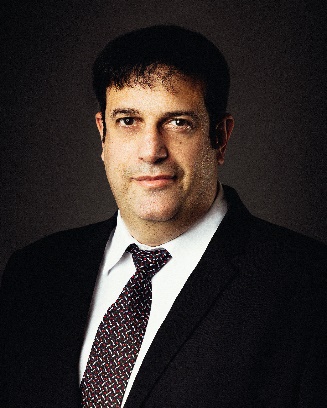
Amir Eliezer
Director Corrosion Research Center Nano-Bio
|
Topic:
Innovative and Futuristic Opportunities for the Next Generation Global Corrosion Experts
Affiliation:
Director Corrosion Research Center Nano-Bio & Advanced Materials (SCE)
Past Chair AMPP Board of Directors
Abstract:
The presentation will focus on today’s new challenges for the next generation in an era once robotics and AI are questioning the need of experts in the field? Lab? manufacturing floor plan and other common working areas.
The presentation will delve into case studies, initiatives, and best practices that underscore the importance of technological innovation, training, and knowledge sharing. Additionally, it will address the economic and strategic advantages of effective corrosion management disciplines, and conclude by outlining potential future.
The importance of corrosion management understanding the relationship between materials and process properties
A few of the key objectives for this presentation include:
•The needs for innovative thinking skills
•The Challenges
•Will AI Replace the Next Generation
•The importance of understanding the upcoming opportunities in a global world
Technologies offer innovative solutions for early detection, monitoring, mitigation, and maintenance, ultimately enhancing operational readiness, safety, and cost-efficiency.
Research and innovation play a pivotal role in advancing corrosion-resistant materials, driving significant advancements in industries such as defense, infrastructure, transportation, energy, and more. The importance of research and innovation in this field cannot be overstated, as they lead to the development of materials that withstand corrosive environments, contribute to longer equipment lifespans, enhance safety, and drive economic and environmental sustainability
Biography :
Prof. Amir Eliezer is the Past Chair of AMPP - Association for Materials Protection and Performance) Board of Directors.
Has studied BSc, MSc, PhD in Materials Engineering (Summa Cum Laude) and an additional M.B.A. He has received several awards and recognitions including the H.H. Uhlig 2013 award. He has published more than 250 scientific publications and has presented over 150 invited seminars and lectures He has a vast range of experience and expertise in different technologies of medical implants and medical oriented surface manufacturing devices. He gained expertise within the Automotive Industrial Innovative products with leading companies such as Volkswagen, General Motors and Fiat on advanced materials, light structures, and nanomaterials. He is the former President of the WCO (World Corrosion Organization- U.N. NGO ,and NACE International Director of European Area.
|
|
|

Nilim Jyoti Buragohain
Chief General Manager
|
Topic:
Pipeline Integrity Management of Legacy Assets: Lessons from India’s Oldest Cross-Country Pipeline
Affiliation:
Chief General Manager (HSE) PHQ, Oil India Ltd. & Chief Executive, Skill Development Institute (SDI), Guwahati
Abstract:
Pipeline integrity is central to energy security, operational safety, and environmental sustainability. Oil India Limited operates India’s oldest cross-country hydrocarbon pipeline—the Naharkatiya Barauni Crude Oil Pipeline (NBPL), commissioned in 1962, and the Numaligarh Siliguri Product Pipeline (NSPL), commissioned in 2008. This keynote shares an operator’s perspective on managing legacy assets in today’s evolving operational and regulatory environment.
In its early years, NBPL was constructed with Coal Tar Enamel (CTE) coating and basic cathodic protection, operating in remote corridors with limited oversight. After more than six decades, the system faces new challenges: CTE coating degradation, urban encroachment on the Right of Way (RoW), AC/DC interference from widespread electrification, and climate-driven soil variability causing extreme flooding from Himalayan-fed rivers.
To address these, OIL has progressively adopted advanced integrity solutions. These include Direct Assessment (DA), high-resolution Inline Inspection (ILI), water crossing surveys, and indirect inspection techniques, integrated within Pipeline Integrity Management Systems (PIMS). By leveraging GIS data, IoT monitoring, predictive analytics, and global best practices, PIMS creates dynamic digital twins and supports probabilistic risk assessments.
NBPL’s journey reflects OIL’s transformation—upgrading coatings, strengthening O&M practices, and embracing modern integrity management. Through risk-based mitigation planning, OIL ensures the safe, reliable, and future-ready operation of India’s most historic pipeline network.
Biography :
Born in 1968, I completed my Bachelor of Engineering in Electronics & Telecommunication from Assam Engineering College, Guwahati (1985–1989), followed by a Post Graduate Diploma in Management from the Assam Institute of Management in 1999. My professional career began in April 1990 with Hindustan Paper Corporation in Cachar District, Assam, as a Graduate Engineering Trainee. Within a short span, I advanced to the role of Electrical Engineer, gaining invaluable exposure to electrical systems in process plants, operation and maintenance, and industrial safety practices. This experience instilled in me a strong technical foundation, discipline in engineering practices, and the ability to work effectively in a team-driven environment. By the time I left in September 1991, I was ready to take on larger responsibilities in more complex industrial domains.
In October 1991, I joined Oil India Limited (OIL) as an Executive Trainee, beginning a rewarding journey of over three decades. At OIL, I have contributed across diverse domains within the Pipeline Sphere, including Telecom & Instrumentation, Telecom Projects, Pipeline Business Development, Contracts & Purchase, and Health, Safety & Environment. My work has spanned pipeline operations, SCADA systems, instrumentation, and telecommunications, while also leading major projects in OFC communication networks, digital monitoring platforms, and integrity management systems. In addition, I have driven initiatives in contract management, procurement, and business development, including the commercialization of telecom infrastructure. These experiences have enabled me to contribute to OIL’s pipelines becoming safer, more reliable, and future-ready.
|
|
|
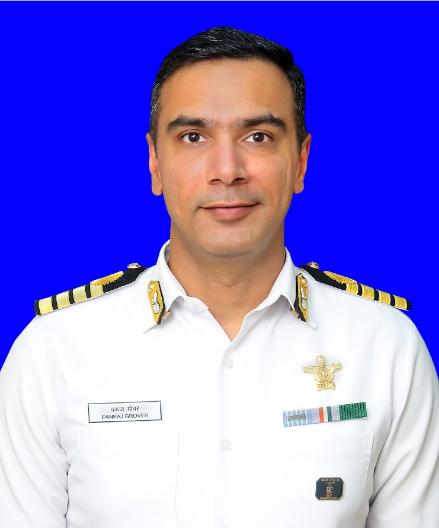
Captain Pankaj Grover
Capt (ND)-SDG/ Directorate of Naval Design
|
Topic:
From Rust to Resilience: Revolutionising Corrosion Control for Sea-Going Platforms
Affiliation:
Capt (ND)-SDG/ Directorate of Naval Design (Submarine Design Group)/ Indian Navy/ IHQ-MoD
Abstract:
Sea going platforms operate at the intersection of harsh seawater chemistry, mechanical stress and mission-critical timelines — making corrosion one of the most persistent threats to safety, availability and lifecycle cost. This keynote, “From Rust to Resilience: Revolutionising Corrosion Control on Sea Going Platforms,” surveys next-generation approaches that will move naval corrosion management from scheduled maintenance to condition-based, predictive strategies. The intent is to explore advances in coatings (self-healing and low-drag antifouling formulations), electrochemical protection (enhanced ICCP systems), and a new generation of thin, low-power sensors for real-time hull health monitoring. Critical to deployment are digital twins and AI-based prognostics that turn heterogeneous sensor streams into actionable maintenance decisions, optimizing readiness while lowering total ownership cost. The talk will also address domain-specific constraints — submerged operations, bandwidth and power limits, stealth and acoustic considerations, environmental and regulatory drivers — and outline a pragmatic adoption roadmap for piloting smart corrosion-control systems on sea going platforms. The future is not rust prevention alone but resilient fleet management that keeps vessels mission-ready longer with lower lifecycle cost.
Biography :
Captain Pankaj Grover, is presently posted at the Submarine Design Group of the Directorate of Naval Design. The Officer is a graduate in Naval Architecture and Ship building, PG diploma holder in Warship Design from IIT (Delhi) and has an M Tech in Corrosion Science and Engineering from IIT (Bombay). He is also an alumnus of Naval War College, Goa. He was commissioned, in 2007, and has served onboard Warships, Naval Dockyard, Submarine Overseeing Team and Policy making positions at Directorate of Naval Architecture.
|
|
|
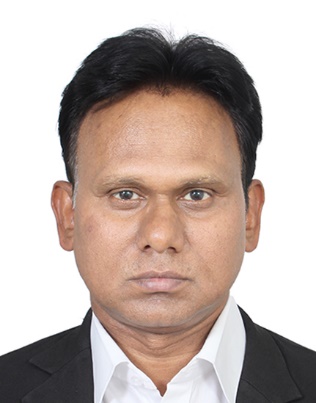
Mr. Gouranga Charan Rout
Sr. Vice President
|
Topic:
Innovative Material Strategies for Sustainable & Resilient Infrastructure
Affiliation:
Sr. Vice President, Electrotherm (India) Limited
Abstract:
The imperative for sustainable infrastructure development necessitates a paradigm shift in material selection and corrosion mitigation strategies. Corrosion not only compromises structural integrity but also contributes significantly to environmental and economic burdens across the asset lifecycle. This keynote presentation examines the integration of advanced corrosion-resistant materials—specifically Fusion Bonded Epoxy (FBE) coated thermo-mechanically treated (TMT) rebars and enhanced Ductile Iron (DI) pipes—as pivotal enablers of sustainable construction. Drawing upon electrochemical characterization, lifecycle cost analyses, and durability assessments in aggressive environments, the discourse underscores the potential of these materials to substantially reduce embodied carbon, extend service life, and minimize maintenance interventions. The session situates these innovations within the broader context of circular economy frameworks and decarbonization pathways, offering a technical roadmap for resilient and environmentally responsible infrastructure systems
Biography :
With over three decades of expertise in the steel industry, Mr. Rout brings an exceptional background in Iron Making, Steel Making, and Rolling Technology. He holds an M. Tech in Mechanical & Material Science, an M.B.A. in Finance, and M.Sc. in Total Quality Management, showcasing his dedication to both technical excellence and managerial insight. Recognized early on with the prestigious Best Graduate Award from Rotary International Club in 1996, Mr. Rout has since built an impressive career, having contributed to renowned organizations like IISCO Burnpur, NISCO, TATA Sponge Iron Ltd, and Adhunik Metaliks. Currently, he serves as the Sr. Vice President of Integrated Steel Unit (ISU) at Electrotherm (India) Ltd, where his experience continues to shape the industry. As a Lifetime Member of the Indian Institute of Metals and with connections to the World Steel University in Belgium, he remains committed to advancing material science and engineering within the steel sector. His wealth of knowledge and practical insights make him a valuable contributor and sought-after speaker on the evolution and innovations in steel manufacturing.
|
|
|
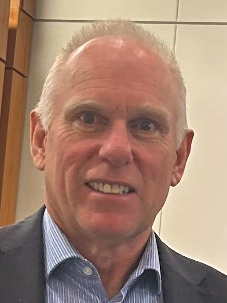
Rod Callon
Managing Director
|
Topic:
The history and development of Cathodic Protection of Steel in Concrete
Affiliation:
Managing Director – Technical Corrosion Technology Services
Abstract:
Having commissioned my first cathodic protection (CP) system for reinforced concrete in 1991, I will present the history and evolution of CP for steel in concrete. The paper will highlight some of the most prestigious installations worldwide, along with the advancements made in monitoring techniques.
One of the common concerns associated with CP in concrete is the cost of maintenance and monitoring. Having been closely involved with this technology for over 20 years, I will illustrate its cost-effectiveness with a practical example.
Almost two decades ago, 13 bridges at Durrat Al Bahrain were protected using cathodic protection. The original design specified stainless steel reinforcement; however, by adopting CP, the client saved approximately $20 million in construction costs. This paper presents performance data from these systems since commissioning and provides an estimate of the maintenance expenditure over that period, demonstrating the long-term value of CP in reinforced concrete structures.
Biography :
Worked in the field of Cathodic Protection for almost 35years Rod has worked on some of the largest and most prestigious projects worldwide. Although experienced in all aspects of CP he has always specialized in the protection of steel in concrete and has been responsible for some novel and innovative approaches to that field. Having graduated in Chemistry in 1991 he is a Fellow of the Institute of Corrosion (UK) and a NACE Corrosion Specialist.
He has attended AMPP annual conference for more than 20 years and has been a regular at Corcon for more than 15 years.
Rod has been Managing Director – Technical of Corrosion Technology Services (CTS) for 15 years and oversees over 200 technical staff across more than 10 countries.
|
|
|
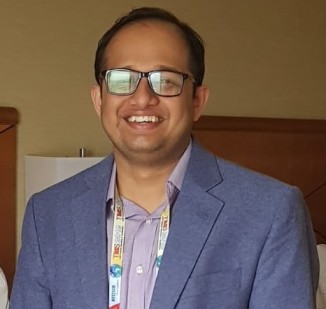
Dr. Saurabh Nene
Associate Professor
|
Topic:
Design of next generation oxidation resistant TiAl complex alloy for defense applications
Affiliation:
Associate Professor, Department of Materials Engineering, IIT Jodhpur
Abstract:
TiAl alloys have been worked from ages considering their huge potential to perform as high temperature light-weight material in aero-engines. The major limitation for them is the sharp decrease in their yield strength beyond 700 C for which 2nd and 3rd generation TIAl alloys such as TNM and TNB alloys showing marginal increase in elevated temperature strength. Though the birth of TNM and TNB alloys tried to address the concerns of pure TiAl alloys, however at the expense of fabrication ability due to presence of boron. In order to tackle this, we developed a next generation TiAl complex alloy free of boron showing almost 1 GPa strength at both RT as well as at 900 C under compressive loading along with almost 20% formability. Moreover, the new alloy displayed limited weight gain at 900 and 1000 C upon isothermal exposure for 96 hrs displaying remarkable oxidation resistance. Thus, excellent resistance to oxidation and exceptionally high strength at 900 C makes the newly designed TiAl complex alloy a potential candidate for aero-engine applications under MAKE IN INDIA initiative.
Biography :
Dr. Saurabh S. Nene is currently working as an Associate Professor at Department of Metallurgical and Materials Engineering (MME), IIT Jodhpur from June 2023. His academic journey started at College of Engineering, Pune (COEP) where he finished his B.Tech in Metallurgical Engineering (2010) followed by completing M.Tech in Materials Science from IIT Bombay in 2012. He started his PhD immediately in 2012 under a joint venture of IIT Bombay, India and Monash University, Australia and finished it in 3.5 years (2016). He subsequently moved to Centre for Friction Stir Processing (CFSP), University of North Texas (UNT) in March 2017 as Post-Doctoral Research Associate and joined subsequently Dept. MME, IIT Jodhpur in Aug, 2020 as Assistant Professor.
Dr. Nene has published 56 international research papers and filed 3 patents in the high entropy alloy (HEA) field within a span of last 5 years having ~ 2500 citations with an h-index of 29 to his credit. His recent invention of light-weight high entropy alloy (L-HEA) is getting scaled up by Indian Space Research Organisation (ISRO), India looking at its high potential to get used in launch vehicle application. Recently, he got listed in the top 2% scientist list in the field of Materials Science released by Elsevier based on Stanford University Database for last three consecutive years. Moreover ScholarGPS listed him among top 5 researchers in India for a theme of High Entropy Alloys.
|
|
|